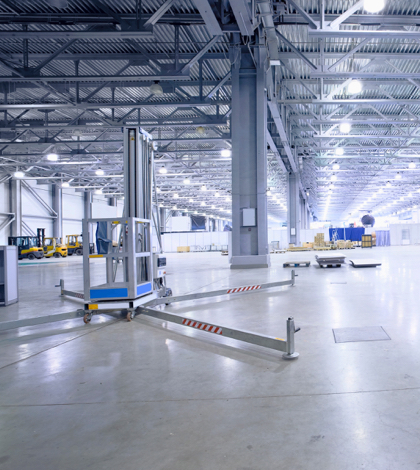Driven by several factors, the current industrial boom is a lot stronger -and potentially has more staying power – than the boom of 2005-2007, according to a recent report.
It’s no secret that e-commerce is behind the huge growth in the industrial sector, both throughout United States and locally in the Inland Empire.
What’s probably not as well know is how strong the industrial market has become, and that it’s not likely to slow down, even slightly, anytime soon.
Put another way, while e-commerce has reshaping the retail industry – it turns out that a lot of people enjoy buying things online and having them delivered the same day – it’s been performing a similar remake on the warehouse-distribution industry, and nowhere are those changes being felt more than in the Inland Empire.
“Anyone who didn’t see this coming wasn’t paying attention,” said Chuck Belden, executive vice president with Cushman & Wakefield Ontario and a longtime industrial broker in the Inland Empire. “‘I’m sorry for all of the Luddites out there, but when Amazon started selling more than books people should have known what was going to happen.”
For the record, Amazon.com, the most popular online retail site, began selling items besides books in 1998, nearly 20 years ago. From there, online retail began to grow into what it is today, about 10 percent all retail sales in the United States, according to a study issued early this year by the U.S. Census Bureau.
“We’re to a point where you can’t do a retail deal here that doesn’t involve e-commerce in some way,” Belden said.
The last time the Los Angeles-Orange County-Inland Empire market experienced a sustained boom market was in 2005-2007, immediately before the Great Recession hit. During that time, the market absorbed approximately 72 million square feet of industrial space, according to CBRE Group Inc.
By comparison, 76.3 million square feet of industrial space was absorbed in that market between the start of 2014 and the end of last year. In both cycles, vacancy was about as low is as it can be: 2.2 percent and 2.3 percent, respectively.
During the 2014-2016 boom cycle, an estimated 88.3 million square feet of industrial space was built in the four-county region, about 15 million more than was completed between 2014 and 2016. However, the lower number bodes well for the market’s immediate future, because it means the region isn’t being flooded with industrial space that could end up vacant should the market slow down.
That one factor – a significantly reduced possibility of overbuilding – makes the most recent industrial surge potentially more durable than the last one, according to CBRE.
Nationwide, the U.S. industrial market has outperformed the economy since 2011, and most experts don’t expect the sector to slow down anytime soon, according to a report last December published by globest.com, which covers the national real estate market.
The US industrial sector has added occupancy during the last 26 quarters, globest.com reported, citing research by Cushman & Wakefield. Nationwide, at the end of the third quarter last year, industrial vacancy nationwide had fallen to 5.6 percent, a year-over-year drop of 90 basis points.
Several “substantial differences” distinguish this boom market from the previous one, most notably the relatively low amount of new product being built at a time when demand for space is as high as its ever been, CBRE stated in a report on the local industrial market released July 6.
Gains in occupancy have outpaced the construction of new buildings, which has kept vacancy low and rents affordable.
“There are a few difference between this cycle and the previous one,” said Jamil Harkness, senior research analyst with CBRE, in a statement accompanying the report. “E-commerce has become a much bigger driver of industrial demand than ever before, while at the same time developers have been much more conservative in building new warehouse space.
“That’s boding well for this sector, in our region and across the nation.”
CBRE ’s assessment of the local industrial market is difficult to dispute, Belden said.
“I can’t really disagree with anything they said,” said Belden, whose specialty is negotiating big-box industrial projects. “You have low vacancy in most [submarkets], and e-commerce has been a big part of that happening. I don’t think it will last forever, but I don’t think it will go away soon, either.”
Online sales in the United States could reach 20 percent – about twice its current rate – as quickly as two to three years from now, said Petra Durnin, director of research and analysis in Southern California for CBRE.
Currently, there are approximately 2,000 fulfillment centers in the Inland Empire, Los Angeles and Orange counties, Durnin said.
“I don’t think we’ll reach a point where every warehouse-distribution operation in Southern California will be a fulfillment center, although I’m sure there are a lot of people who would like to see that happen,” Durnin said. “The supply chain used to that something would arrive at the ports, then it would go the warehouse and then it would go to the retailer. With fulfillment centers, the last mile is a lot more complicated.”
 IE Business Daily Business news for the Inland Empire.
IE Business Daily Business news for the Inland Empire.


